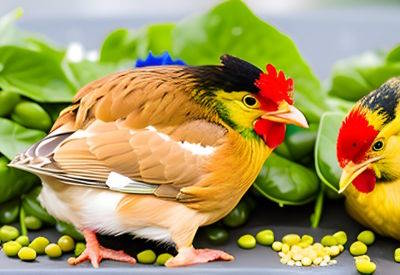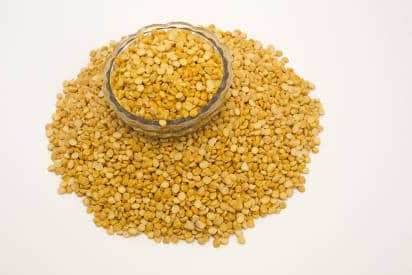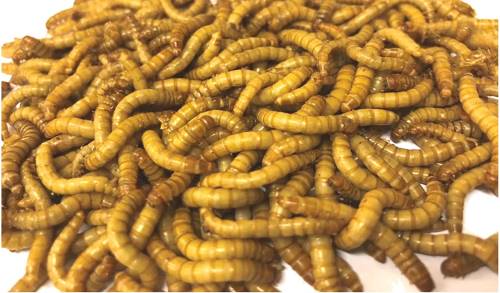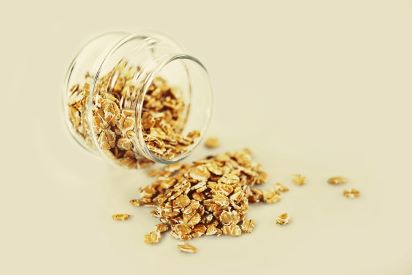I’ve always been curious about what I can feed my flock to keep them happy and healthy. One question that’s been on my mind lately is: can chickens eat split peas? Well, I’ve done some research, and the answer is yes, chickens can eat split peas, but there are a few things to consider before adding them to your chickens’ diet.
You might wonder why I’ve been so focused on this particular food. It all started when I was cleaning out my pantry and stumbled upon a big bag of split peas. I thought, “Could these be a tasty and nutritious treat for my feathered friends?” So, I set out on a quest to learn everything I could about the pros and cons of feeding split peas to chickens.
In this article, we’ll explore the nutritional benefits split peas can offer and the potential risks and drawbacks associated with feeding them to your flock. We’ll also discuss tips and tricks for preparing split peas and other alternative protein sources to ensure your chickens get the necessary nutrients. So, let’s get clucking and dive into the world of split peas and chickens!

Nutritional Benefits of Split Peas for Chickens
Before we jump into whether chickens can eat split peas, let’s talk about why you might want to consider them in the first place. Split peas are rich in protein, vitamins, minerals, and fiber, all essential for your chickens’ health and well-being.
Protein Content and Its Importance for Egg Production
One of the standout features of split peas is their protein content. They pack a whopping 25 grams of protein per 100 grams! This makes them an excellent source of plant-based protein for your flock. Protein is crucial for egg production, and a higher protein intake can lead to more eggs and better egg quality.
Vitamins and Minerals Present in Split Peas
Split peas are also a valuable source of vitamins and minerals. They contain essential nutrients such as iron, magnesium, potassium, and zinc. These minerals are necessary to maintain strong bones, support a healthy immune system, and ensure proper nerve function in your chickens.
Fiber Content and Its Role in Digestion
Chickens can also benefit from the fiber found in split peas. Fiber is important for maintaining good gut health and promoting healthy digestion. A fiber-rich diet can help prevent constipation or diarrhea, ensuring your chickens stay happy and healthy.
[ChickenAffiliate]
Potential Risks and Drawbacks of Feeding Split Peas to Chickens
Now that we’ve covered the benefits, let’s discuss some potential risks and drawbacks of feeding split peas to your chickens. While they may be nutritious, there are a few concerns to remember.
Hardness and Choking Hazard
One issue with split peas is their hardness. When dry, split peas can be tough for chickens to peck at and break down. This can pose a choking hazard, especially if your chickens try to swallow the peas whole. If you decide to feed split peas to your chickens, ensure they are softened (more on that later) to reduce the risk of choking.
Possible Presence of Anti-Nutritional Factors
Split peas, like other legumes, may contain anti-nutritional factors such as protease inhibitors and lectins. These substances can interfere with the absorption of nutrients and negatively impact your chickens’ health. However, the presence of these factors is generally low in split peas, and proper preparation can help further reduce their impact.
Impact on the Taste and Quality of Eggs
While this may not concern everyone, some chicken keepers have reported a change in the taste and quality of eggs when their chickens consume large amounts of legumes, including split peas. This could be a result of the higher protein content or other factors. If you’re particular about the flavor of your eggs, this is something to keep in mind.
Preparing Split Peas for Chickens: Tips and Tricks

If you’ve weighed the pros and cons and decided to try split peas, there are a few best practices to ensure your chickens get the most out of this nutritious treat.
Soaking and Cooking Split Peas to Soften Them
To avoid the choking hazard mentioned earlier, softening the split peas before feeding them to your chickens is important. Soaking them in water for at least 12 hours can help, but cooking them is even better. Boiling the peas for 30 minutes to an hour will significantly soften their texture, making them much safer and more enjoyable for your chickens to eat.
Mixing with Other Feed Ingredients for a Balanced Diet
It’s essential not to rely solely on split peas as a primary food source for your chickens. While they offer some valuable nutrients, they should be part of a balanced diet that includes a variety of other feed ingredients. Mixing split peas with regular chicken feed, grains, and other nutritious treats will ensure your flock gets all the nutrients they need to thrive.
Proper Storage and Handling to Prevent Spoilage
Like any other food, split peas can spoil if not stored and handled correctly. Store the peas in a cool, dry place away from direct sunlight to keep them fresh and safe for your chickens. Additionally, when preparing the peas for your chickens, discard any soaking or cooking water, as it can become a breeding ground for bacteria.
Alternative Protein Sources for Chickens

If you’re not quite sold on the idea of feeding split peas to your chickens, there are plenty of other protein sources to consider. Here are a few alternatives to ensure your flock gets the protein it needs.
Mealworms and Other Insects
Insects like mealworms, crickets, and black soldier fly larvae are excellent protein sources for your chickens. They’re also a natural part of their diet, making them a great supplement for protein intake.
Fishmeal and Other Animal-Based Sources
Fishmeal is another high-protein option that can be included in your chickens’ diet. However, ensuring the fishmeal is ethoxyquin-free is important, as this chemical can harm chickens. Other animal-based protein sources include meat scraps and boiled eggs.
Legumes and Other Plant-Based Sources
Plenty of other legumes besides split peas can provide protein for your chickens. Lentils, chickpeas, and various types of beans can all be included in their diet. However, as with split peas, it’s important to properly prepare these legumes to reduce choking hazards and anti-nutritional factors.
The importance of moderation
One additional point worth mentioning is the importance of moderation when feeding split peas and other legumes or grains to your chickens. While these foods offer valuable nutrients, it’s crucial not to overdo it. Overfeeding any food item can lead to an unbalanced diet and potential health issues for your flock.
Here are a few tips to keep in mind when feeding split peas and other supplemental foods:
- Gradual Introduction: When introducing new foods like split peas to your chickens’ diet, start with small amounts and gradually increase the portion size. This will give their digestive systems time to adjust and help you monitor for adverse reactions.
- Treats vs. Staple Diet: Remember that foods like split peas, beans, and grains should be considered treats rather than a replacement for a balanced chicken feed. Commercially available chicken feed is specifically formulated to provide all the nutrients your chickens need for optimal health.
- Monitor Your Flock’s Health: Pay close attention to your chickens’ behavior, egg production, and overall health when introducing new foods to their diet. If you notice any changes or issues, it may be necessary to adjust their diet accordingly.
- Research Before Feeding: Before adding any new food to your chickens’ diet, do some research to ensure it’s safe and beneficial for them. While split peas and the other foods mentioned in this article can be a healthy addition to their diet, not all human foods are suitable for chickens.
By keeping these tips in mind and ensuring a diverse, balanced diet for your chickens, you’ll be well on your way to raising a happy, healthy flock. Remember, moderation is key when feeding your chickens split peas or any other supplemental foods.
What Other Foods Can Chickens Eat?

While split peas are a nutritious option for your flock, it’s important to provide a variety of foods to ensure a well-rounded diet. From grains to legumes, chickens can enjoy a wide array of delicious and nutritious treats. In this section, we’ll explore five additional food items that can benefit your chickens, offering them a diverse menu to satisfy their taste buds and bodies.
Beans
Beans are another great source of protein and fiber for your chickens. They come in numerous varieties, such as black beans, pinto beans, and kidney beans, each offering unique flavors and textures.
Just like split peas, beans should be cooked before feeding them to your chickens to reduce the presence of anti-nutritional factors and to soften their texture.
Read More: Can Chickens Eat Beans? A Guide To Feeding Chickens Legumes
Rice
Rice is an excellent carbohydrate source that can provide your chickens with much-needed energy. Both brown and white rice can be fed to your flock, but brown rice has the added benefit of being more nutritious due to its higher fiber, vitamin, and mineral content.
Remember to cook the rice before feeding it to your chickens, as uncooked rice can be difficult to digest.
Read More: Can Chickens Eat Rice? The Truth About This Common Grain
Oats
Oats are a fantastic addition to your chickens’ diet, offering a good balance of carbohydrates, protein, and fiber. They also contain essential nutrients like vitamins B and E, manganese, and iron.
You can feed your chickens whole oats or rolled oats, but avoid feeding them instant or flavored oats, as they may contain added sugars and preservatives unsuitable for your flock.
Read More: Can Chickens Eat Oats? A Guide To Feeding Oats To Your Flock
Quinoa
Quinoa, a highly nutritious pseudo-grain, is another great option for your chickens. It’s rich in protein, fiber, vitamins, and minerals, making it a powerhouse of nutrients for your flock.
Like other grains and legumes, quinoa should be cooked before feeding it to your chickens. This will not only make it easier for them to digest but also help reduce the presence of anti-nutritional factors.
Read More: Can Chickens Eat Quinoa? The Superfood Boost Your Chickens Need
Lentils
Lentils are yet another protein-rich legume that can benefit your chickens. They’re also an excellent source of iron, fiber, and various B vitamins.
As with split peas and beans, it’s important to cook lentils before feeding them to your flock to ensure they’re soft enough to eat and reduce anti-nutritional factors.
Read More: Can Chickens Eat Lentils? 5 Awesome Benefits
By including a variety of grains and legumes in your chickens’ diet, you’ll ensure they receive a balanced mix of nutrients to support their overall health and well-being. Don’t be afraid to get creative and experiment with different combinations to keep your flock happy and well-fed!
Can chickens eat split peas – final thoughts
In summary, our chicken-feeding adventures have led us to discover that split peas can indeed be a part of our chickens’ diet. These protein-packed legumes offer an array of nutritional benefits, from vitamins and minerals to fiber, making them a tempting treat for our feathery friends.
However, weighing the potential risks, such as choking hazards and anti-nutritional factors, is essential before tossing a handful of split peas into the coop.
So let’s get creative with our flocks’ diets while keeping their well-being in mind! Whether you include split peas, explore alternative protein sources, or stick to the tried-and-true chicken feed, remember that balance is key.
Related Articles:
